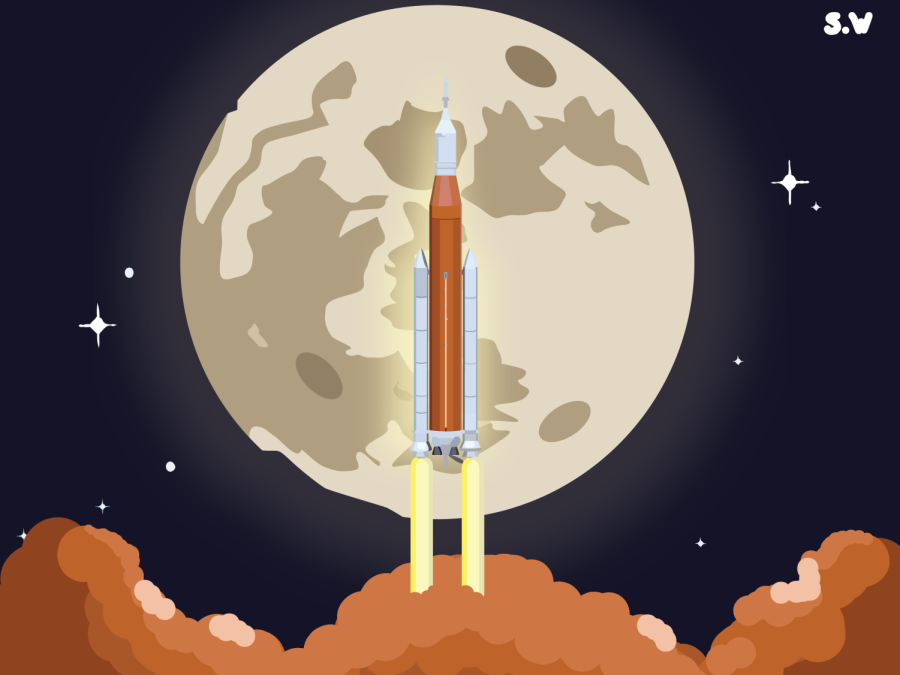Artemis I Mission Endeavors to Take Humans Back to the Moon
A first step to getting people to Mars, with an important milestone: getting the first woman and person of color on the moon.
On November 16th, the Space Launch System (SLS), the most powerful rocket ever made, lifted off into the night sky from the Kennedy Space Center in Florida to make an unmanned test flight to the moon and back, ushering a new age of manned space travel last seen in the Apollo missions of the 20th century as part of the Artemis I mission. Carrying the Orion spacecraft designed to take humans back to the moon, Artemis I intended to lift off on September 3rd but was delayed until November 22 due to a combination of mechanical and weather issues. The rocket finally splashed down in the Pacific Ocean on December 11th. This first flight carried no astronauts as it served as a test for the systems of the craft and provided details about its performance and the necessities for a future manned mission. The mission marks the beginning of NASA’s attempt to return to the Moon, 50 years since Harrison Schmitt, the last astronaut to set foot on the Moon, left with the Apollo 17 mission. NASA hopes to “use what [they] learn on and around the Moon to take the next giant leap: sending the first astronauts to Mars.”
The Artemis mission serves as a collaboration between the ESA (European Space Administration) and NASA, with the ESA constructing the service module (ESM), which houses all the supplies and necessary propulsion to carry the Orion capsule. Built by NASA, the capsule would typically hold the astronauts. Instead of astronauts, however, the craft carried 10 cubesats (tiny, shoebox-sized satellites) to deploy around the moon to survey the moon and gain new data. Each cubesat weighs only one to ten kilograms and measures 10 cm x 20 cm x 34.5 centimeters, making it possible to launch with the Orion capsule and ESM. The ESM also housed an incredible 33 engines – one powerful main engine, eight backup engines, and 24 small engines for attitude control. It was loaded with 8,000 liters of fuel to sustain these engines for a round trip, and was packed with enough water and air to sustain four astronauts for 20 days and carried four extendable solar panels to maintain power.
The Artemis I mission served as the beginning to an ambitious return to the Moon after half a century and marked the start of a new era in human space exploration. The Artemis mission ends the relative inactivity seen especially by NASA compared to the 20th century and signals toward much to look forward to regarding manned space travel. The successful demonstration of all equipment and systems will hopefully lead to a successful crewed flight, which NASA is currently planning for 2024, and will eventually lead to the first woman and first person of color landing on the surface of the moon.







